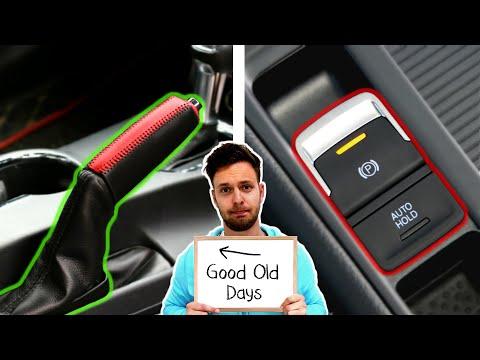I remember the first time I laid eyes on that old, beat-up Chevy Impala sitting in the corner of a dusty lot. The car was far from pristine, but it had a certain charm that no amount of rust could tarnish. My grandfather had always talked about the days when cars were built to last, when every feature had a purpose and added to the driving experience. I found myself drawn to that Impala, not just because of its classic look but because of the nostalgia it stirred up. It was like a tangible piece of history, a reminder of how things used to be. Little did I know, this car would lead me to reflect on the features of old cars that we’re slowly losing and might never get back.
One of the first things that struck me about the Impala was its dashboard. It was a marvel of analog technology, with dials and gauges that seemed to tell a story about the car’s performance. The large speedometer and tachometer, with their distinct, mechanical needles, had a kind of personality that modern digital displays often lack. Each gauge had its own unique design, and they were all easy to read at a glance. It wasn’t just functional; it was a work of art that added character to the driving experience.
Then there were the manual window cranks. It might sound like a minor detail, but there was something satisfying about rolling down the windows with a simple twist of the wrist. It felt more connected to the car, as if you were an active participant in its operation. Today, power windows have replaced those cranks, and while they offer convenience, they lack the tactile satisfaction that came with manually adjusting the airflow.
The Impala also boasted a large, comfortable steering wheel with a horn ring in the center. It was easy to grip and gave me a sense of control over the car. The horn ring itself was a nostalgic touch, a design feature that allowed drivers to honk with just a gentle press of the center of the wheel. It felt more engaging than the small, often awkwardly placed horn buttons found in modern cars.
Another feature that stood out was the classic bench seat. Unlike today’s bucket seats, which often come with multiple adjustments and side bolstering, the bench seat offered a spacious, unbroken area of comfort. It was perfect for long drives, allowing both the driver and passengers to stretch out and enjoy the ride. The ability to slide across the seat for easier access or to shift around was a simple pleasure that modern, ergonomically designed seats often can’t match.
As I took the Impala for a test drive, I was struck by the simplicity of the car’s controls. The air conditioning, for instance, was manually controlled with a series of levers and knobs. There were no complex digital interfaces or automatic climate control systems—just straightforward, mechanical controls that allowed you to fine-tune the temperature and airflow. There was something refreshing about this simplicity, a reminder that sometimes less is more.
The car’s sound system was another nostalgic feature. It had a classic AM/FM radio with large, tactile knobs for tuning and volume. The sound quality might not have matched modern systems, but there was something charming about the analog radio experience. Scanning through stations with a satisfying click and listening to the crackle of a distant broadcast was a sensory experience that felt more personal than today’s digital playlists.
The old Impala also had a feature that many modern cars have long abandoned: the manual transmission. Driving the car with a stick shift was an exercise in skill and engagement. It required a level of attention and coordination that made each drive feel like a genuine adventure. The smooth, rhythmic shifting of gears was not only a driving technique but also a way to connect with the car in a more meaningful way.
The car’s build quality was another aspect that stood out. The heavy, solid doors closed with a reassuring thud, and the entire car felt built to withstand the test of time. There was a sense of durability and craftsmanship that is increasingly rare in today’s cars, which often prioritize lightweight materials and fuel efficiency over robust construction.
One of the most charming features of the Impala was its large, circular headlights. These headlights were more than just functional; they added a distinctive look to the car, giving it a personality that modern, sleek headlight designs often lack. The glow from those large, round headlights seemed to cast a warm, inviting light on the road, enhancing the driving experience in a way that today’s LED lights can’t quite replicate.
Finally, I couldn’t help but notice the car’s analog clock on the dashboard. It was a small, yet elegant feature that added a touch of sophistication to the interior. Unlike modern digital clocks, this one had a classic design with moving hands and a gentle ticking sound. It was a small detail, but it made me appreciate the attention to craftsmanship and aesthetics that went into the car’s design.
Driving the old Impala was like taking a trip back in time, a chance to experience the features that made cars of that era so special. As I returned the car to the lot, I couldn’t help but feel a pang of nostalgia for the old features that we’re slowly losing in favor of modern conveniences. While technology has certainly made cars more advanced and efficient, there’s something irreplaceable about the tactile, analog experiences of the past. The old Impala reminded me that while we continue to innovate and evolve, it’s important to cherish the classic elements that defined the driving experience of yesteryear.
